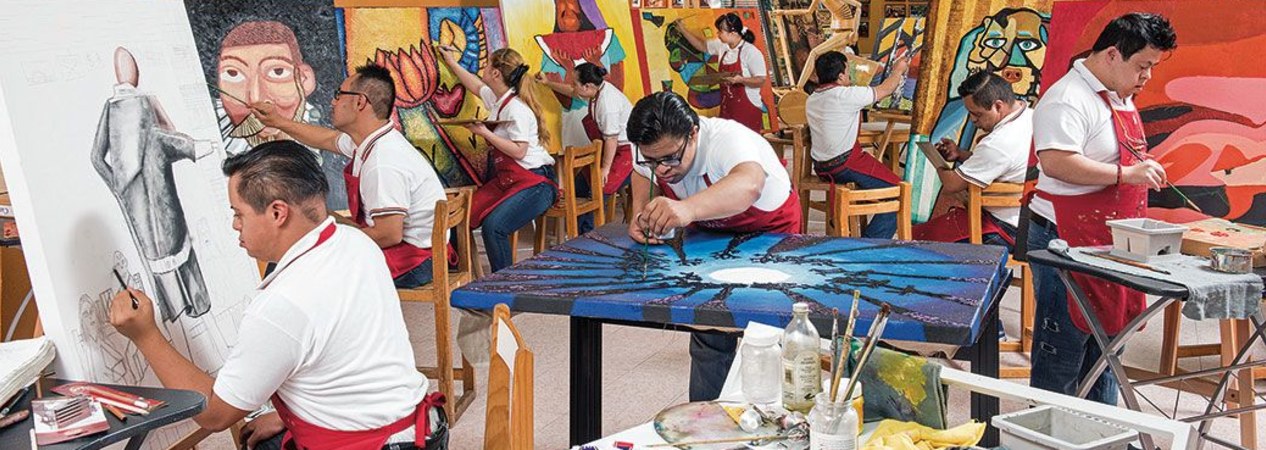Creativity in Education – a Critical Need and a Global Mandate
Why Creativity? Why Now?
Susan Magasamen and Ivy Ross put it succinctly in their new book, Your Brain on Art – How the Arts Transform Us: “Creativity is, put simply, the ability to imagine and come up with original ideas and solutions. It’s a willingness to leave what is known, what exists, and open up to what is possible. Creative thinking allows us to connect information in new and meaningful ways and as such, it’s the birthplace of innovation and invention, making it one of humankind’s most valuable skills.”
The challenges of tomorrow’s societies will not be solved with today’s solutions.
In our complex world, our education systems should be oriented towards building our youth’s ability to harness their creative skills, to build new ideas, and propose novel solutions. Yet many education systems across the world are overly focused on rote, technical learning, missing the mark on the opportunity to develop the meta skill of creativity.
In honor of International Day of Education, trusted advisers of the BIC Foundation’s Creativity Community of Practice shared personal perspectives on why creativity in education is so critical to our collective future.
In sharing their words, we hope to inspire action now to drive change amongst those who shape our education systems. In doing so, together, we can practically and proactively support our teachers who are developing the leaders of tomorrow.

Danton, a French revolutionary, once said: “Après le pain, l'éducation est le premier besoin d'un peuple.” (After bread, education is the first need of a population).
Today, in the 21st century, with the advent of generative AI, this statement is more valuable than ever, but we can highlight the particular importance of education to promote creative thinking. Never has creativity been understood to the extent it is today (albeit remaining rather mysterious), and never have individuals and societies needed creativity as much to be successful in personal, professional and societal problem solving. A growing scientific literature provides insights into the ingredients for creative thinking, how to detect creative potential, and how to promote and develop it.
Todd Lubart, Professor of Psychology, Université Paris Cité, Director of the Homo Creativus research chair, and founding President of ISSCI (International Society for the Study of Creativity and Innovation)
Great change can happen when teachers collaborate, especially with creativity at the forefront. We need to come together as a community to share ideas, best practices, and powerful stories of creating innovative classrooms across the globe. It's our moment to inspire and empower the next generation. Imagine a classroom where students learn and develop the skills to think creatively and critically.
As educators, it's important to understand that creating an engaging environment is just the beginning. Preparing our students for the future will depend on our ability to bridge the gap between creative teaching and creative learning. We must equip our students with the ability to tackle complex problems and think with different perspectives. In a constantly changing world, the ability to think deeply and meaningfully is essential.
Dr. Cyndi Burnett, Vice President, and Katie S. Trowbridge, M. Ed President/CEO, curiositytocreate.org and creativethinkingnetwork.com
Most countries have now included competences such as creativity, critical thinking, collaboration and communication in their curriculum objectives as they realize that those skills need to be acquired at the same time as knowledge. This is partly a response to the demand for these skills on the labor market and to the economic need for innovation, but interestingly, in the case of creativity, one of the byproducts is related to people's well-being.
Even though they do value it, teachers are not traditionally emphasizing the development of their students' creativity. In many cases they are not sure what they can do to nurture these skills. This is why the OECD developed a series of resources for teachers that were field-tested in 11 countries and often co-designed with teachers. They are available in an OECD app (www.oecdcericct.com/auth/home) comprised of rubrics and examples of lesson plans.
Stephan Vincent Lancrin Deputy Head of the Centre for Educational Research and Innovation, OECD
Creativity, an essential yet undervalued life skill in education, requires a global pedagogical shift to be fully integrated across disciplines, fostering innovative, solution-oriented thinking for societal challenges.
Curriculum for Life develops short courses that weave life skills learning through contemporary contexts. One course we are working on, "Wellbeing in Action," blends science, PSHE (well-being) and Creative Arts, while creating a blueprint for interdisciplinary curricula development. This method, combining scientific rigor with creative thinking, is supported by research indicating it boosts student engagement, well-being, and academic performance.
Alex Catallo, Co-Founder Curriculum for Life

I am inspired by the passion and dedication of these and other thought leaders in our Creativity Community of Practice. Through our global network we’ve seen new collaborations and partnerships that have directly changed the lives of students and amplified the impact of our teachers. I invite you to join our growing community of change makers who are passionately redefining education through the lens of creativity. Educators can start by downloading our Creativity Educators Guide – here we share simple and practical ideas to bring Creativity into the Classroom.
Together we can and will make a difference!
Alison James, Executive Director BIC Corporate Foundation

